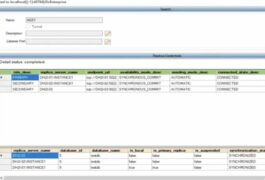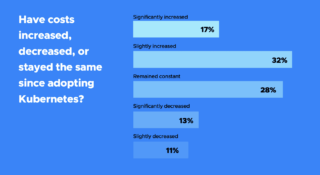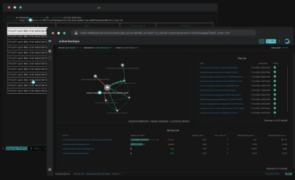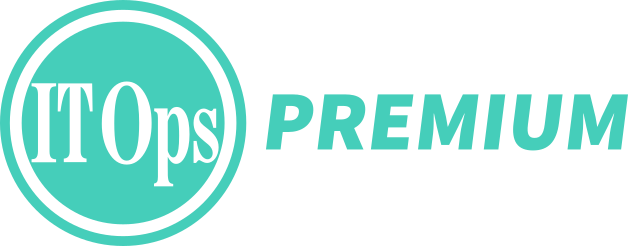Topic: kubernetes
8 reasons why Crossplane is the ideal engine for internal developer platforms
Crossplane is a Kubernetes-native framework that allows organizations to manage anything using a consistent API and runtime, making it an ideal foundation for Internal Development Platforms (IDPs). Organizations typically run a complex mix of cloud and on-premise resources like databases, virtual machines and network policies. IT teams must support multiple platforms to provision and manage … continue reading
Platform Engineering is not (just) about infrastructure!
In the fast-paced and ever-changing world of technology, the term “Platform Engineering” is often subject to a narrow interpretation, confined to the spheres of infrastructure and systems management. Because of this, it could be perceived as an exclusively technical domain, dominated by servers, clusters, and networks. This limited view, however, does not give proper justice … continue reading
SUSE ATIP 3.0 introduces enhancements for telco operations
SUSE has announced the latest version of SUSE ATIP, which is a cloud infrastructure solution for telecommunications. It will be generally available in April. SUSE ATIP 3.0 introduces automated zero-touch rollout and lifecycle management for Kubernetes clusters and bare-metal infrastructure. This enables companies to scale cloud native network function deployments. It also offers integration points … continue reading
DH2i releases DxOperator for deploying SQL Server containers on Kubernetes
The IT infrastructure company DH2i has announced the release of DxOperator, which can be used to deploy SQL Server containers on Kubernetes. DH2i worked closely with Microsoft’s SQL Server team in developing this new solution. The goal behind it was to streamline the deployment process and offer customers “unparalleled ease of use, robustness, and automation … continue reading
ITOps Times Open-Source Project of the Week: EMCO
EMCO, which stands for Edge Multi-Cluster Orchestrator, is a control plane and application orchestrator for Kubernetes, enabling organizations to connect and deploy their workloads across public cloud, private clouds, and the edge, while still maintaining communication with and among applications. It intelligently assigns workloads into clusters, and interacts with the Kubernetes API server to hand … continue reading
ITOps Times Open-Source Project of the Week: Clusternet
Clusternet is a tool for managing multiple Kubernetes clusters across different environments. The goal of the project is to make management as easy as “visiting the Internet.” The interface lets you manage or visit clusters from a single place as if they were running locally. According to the project maintainers, this helps eliminate the need … continue reading
ITOps Times Open-Source Project of the Week: Capsule
Capsule is an open-source framework for implementing multi-tenant and policy-based environments in Kubernetes clusters. It was created to solve the challenge of cluster sprawl, which is when the number of clusters in an organization grows to a number that is difficult to manage. Normally, one could use the Namespace object to create partitions of a … continue reading
Report: Kubernetes responsible for increasing cloud spend
Companies are spending more and more on cloud services thanks to Kubernetes. A recent microsurvey from the CNCF revealed that for 49% of companies, Kubernetes was responsible for increased cloud spend. The microsurvey was designed by the CNCF and OpenCost team and responses were gathered between June and November 2023, with just over 100 respondents … continue reading
The next major shift in enterprise software engineering: From platforms to “platformless”
The evolution of enterprise software engineering has been marked by a series of “less” shifts – from client-server to web and mobile (“client-less”), data center to cloud (“data-center-less”), and app server to serverless. These transitions have simplified aspects of software engineering, including deployment and operation, allowing users to focus less on the underlying systems and … continue reading
ITOps Times Open-Source Project of the Week: Karmada
Karmada is a Kubernetes management system that enables users to run their cloud-native applications across multiple Kubernetes clusters and clouds, with no changes to their applications. By using Kubernetes-native APIs and providing advanced scheduling capabilities, Karmada enables open, multi-cloud Kubernetes. Karmada seeks to offer seamless automation for managing applications across multiple clusters in diverse cloud … continue reading
Kubernetes 1.29 released with 11 new stable features, many more in alpha/beta
The Kubernetes release team has announced the release of Kubernetes 1.29, which includes nearly 50 improvements. The theme of this release is Mandala, which the release team explains “reflects our community’s interconnectedness—a vibrant tapestry woven by enthusiasts and experts alike. Each contributor is a crucial part, adding their unique energy, much like the diverse patterns … continue reading
ITOps Times Open-Source Project of the Week: Pixie
Pixie is an open-source observability tool for Kubernetes applications. Pixie uses eBPF to automatically capture telemetry data without manual instrumentation. Users can swiftly access metrics, events, traces, and logs without code modification through dynamic eBPF probes and ingestors. The system enables easy integration without requiring changes to the existing codebase, allowing users to delve into … continue reading















